Edmonton Transit then and now – CN Tower
In our first picture, it’s 1973. We see an ETS trolley bus pass by the CN Tower in Edmonton and we visit that location to see what things look like today. We knew the building still stood, and buses still ran, so in some respects the scene then and now is much the same. Except the CN has moved out of the building and the buses that pass are now diesel powered.
The trolley bus shown in the first image, #139, was when captured almost thirty years old and by then was looking a bit worn out. Built in 1945, it is a model T44 built by Canadian Car and Foundry in Fort William (Thunder Bay) Ontario. This was the first batch of trolleys produced by that company. Built under license from the JG Brill company in the US, they came to be known as…well…Brills. Twenty two buses were built to that order, numbered #132-#152.
ETS at one time restored over eighty buses of this type, most of them bought new in the period 1945-1949. Twenty of them however were purchased used from other Canadian transit systems in the 1960s. In addition they had ten otherwise similar looking but slightly larger model T48 and T48A buses, built in years 1952 and 1954. The T stands for “trolley” and the number represents its seating capacity. Also, two Brill built TC44 models were purchased new from the US in 1945. These were presumably bought just before Canadian production commenced and perhaps were a sample order to see what this new type of bus was about. The US models were slightly different in look and configuration but mechanically were, I am told, much like their Canadian counterparts.
Prior to the Brills, ETS had a small, motley collection of trolley buses from various US and British firms, built in the years 1939 (the start of the network) to 1944. With the arrival of the CC&F buses, these early oddballs were soon orphans and some were retired quite early on, while others lasted until the mid-1960s. Throughout the post war period the system was greatly expanded upon, concurrent with the Brills being delivered, and eventually reached to many corners of the city.
All CC&F buses were retired by the later half of the 1970s and were replaced by a modest fleet of Flyer (Winnipeg Manitoba) trolleys bough new. These proved to be short lived however and in the early 1980s ETS bough a hundred Brown Boveri buses made using GMC New Look (aka Fishbowl) shells. These were the last such buses the city would buy.
Edmonton’s trolley network was closed in 2009, a poor decision according to some. Today in Canada Vancouver is the only TB operator left, but their system is huge, modern, efficient and appears to have a solid future.
Most cites that adopted trolley buses, but not all, had a tracked trolley network already in place. The similarities of the two made the transition from one to the other fairly easy. By the 1940s most tracked trolley networks were in bad shape and few communities that operated them wanted to invest in what was then seen as old fashioned technology. Buying trolley buses allowed a budget minded operator to reuse some of the older infrastructure, like power lines, substations, line poles and so on. A savings like this would be most welcome.
Trolley buses, aka trolley coaches or trackless trolleys, were considered, at the time and by many, to be superior to those powered by internal combustion engines. The boom period was short lived however and by the early 1950s, it became clear that diesel buses would soon dominate the market. They were more flexible, and as it turned out cheaper to operate and soon would be reliable and powerful enough (two big sticking points) to negate the advantages trolley buses once possessed.
There were once over a dozen TB systems in Canada and Vancouver, as mentioned, is the last. There are some in the US and in parts of the world they are in fact quite popular. Prior to Edmonton’s closing, Toronto and Hamilton had systems into the 1990s. In the west, Calgary and Saskatoon lasted into the mid-1970s, while Regina’s was gone by the mid-1960s. Most trolley bus networks were not closed because the concept was terribly flawed, but rather most just got too old and unreliable or were not utilized efficiently. Had upkeep been done to more, many might still be around.
Canadian Car and Foundry built trolley buses, over a thousand of them, from 1945-54. They also produced internal combustion buses too from 1945-1962. The plant where the buses were made at one time built aircraft, logging equipment and a curious mix of other things. Today it’s owned by transportation giant Bombardier and they make passenger rail cars and tracked transit vehicles…but no buss. In Canada, New Flyer (formerly Flyer) of Winnipeg makes trolleys for Canadian (meaning Vancouver) and US operators. The bus seen driving away in our “now” picture is from that maker. It’s a diesel D40LF built in the mid-2000s.
The bus in the first image is on the #3 route. It travels through the core to points northeast then turns around and heads back to downtown, before heading to points northwest. The modern #3 bus follows much the same route today.
The building seen in behind in both pictures, far right, is known as the CN Tower – not to be confused with the more well know building of the same name in Toronto. It was built in 1966 and was for a time the tallest structure in Edmonton. It housed CN’s main Western Canadian offices and was also its train station. The building once overlooked a rail yard, but the tracks are long gone, having been pulled up in the 1990s.
Via Rail Canada took over CN’s passenger trains in the late 1970s, and until 1998 used the station. They have since moved to a new facility north of downtown.
A new condo building, seen next to the CN Tower, has been constructed where the rail yard was once located (a rough neighbourhood by the way). It’s size makes our building look rather insignificant. Despite research on the subject, it’s not known what the future holds for the old building. With the CN having vacated a few years ago (their sign remains though) is it being used as a general office building or will it be torn down? Hard to say. There was a for lease sign on it and the same can be found online, so for now perhaps it’ll continue to see use. The lower facade is different, but otherwise little has changed since the first image was snapped.
Of interest to car buffs is the fairly new Chevrolet El Camino, fake wood trim and all, heading away in the original picture. I always wondered what the appeal of these was. They were bad as a car and equally so as a truck, or at least that’s how it looks to me.
Other cars can be seen, but outside the red one, a early 1970s Dodge or Plymouth model, they are too far away to accurately identify. The suitcase the one lady is carrying (heading out on a train?) sure is loud – it almost matches the colours of that car and the bus!
The original image is courtesy the Stephen Scalzo Collection and is used with permission.
To see more posts like this, follow these links…
Calgary Transit then and now – Elbow Drive part 1.
Edmonton Transit then and now – Northlands Coliseum – Rexall Place.
Edmonton Transit then and now – 95th St.
If you’d like to know more about what you’ve seen here, by all means contact us!
Date: January, 2014.
Location: Edmonton, AB.
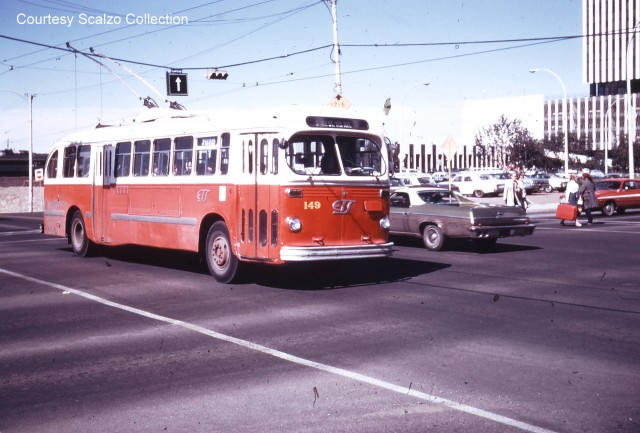
In 1973 a trolley bus passes the CN Tower Edmonton (far right). Courtesy Scazlo Collection.
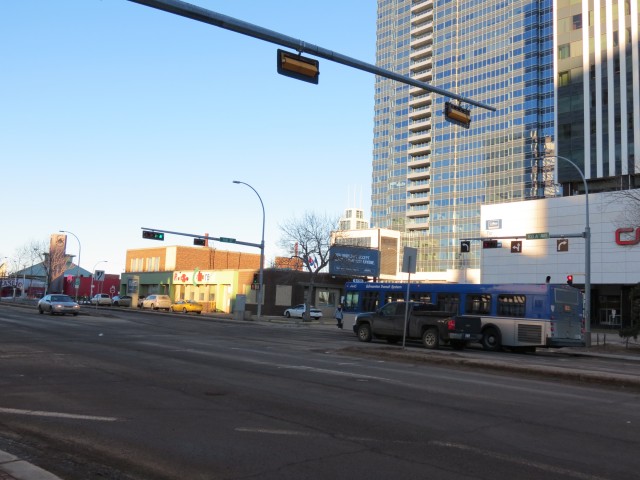
The same view today…
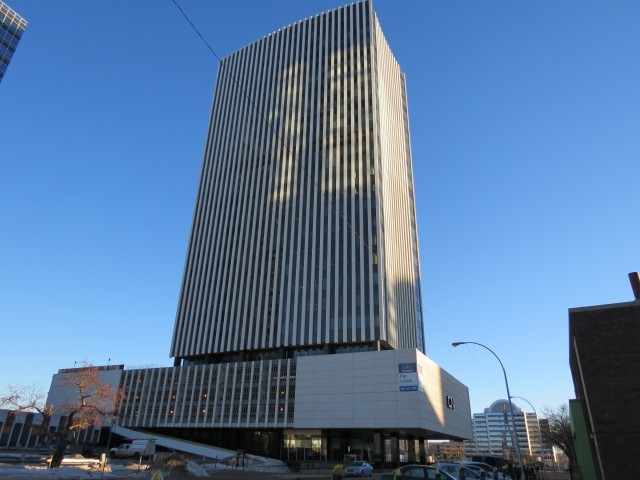
The building was constructed in the mid-1960s and was at one time also the train station.

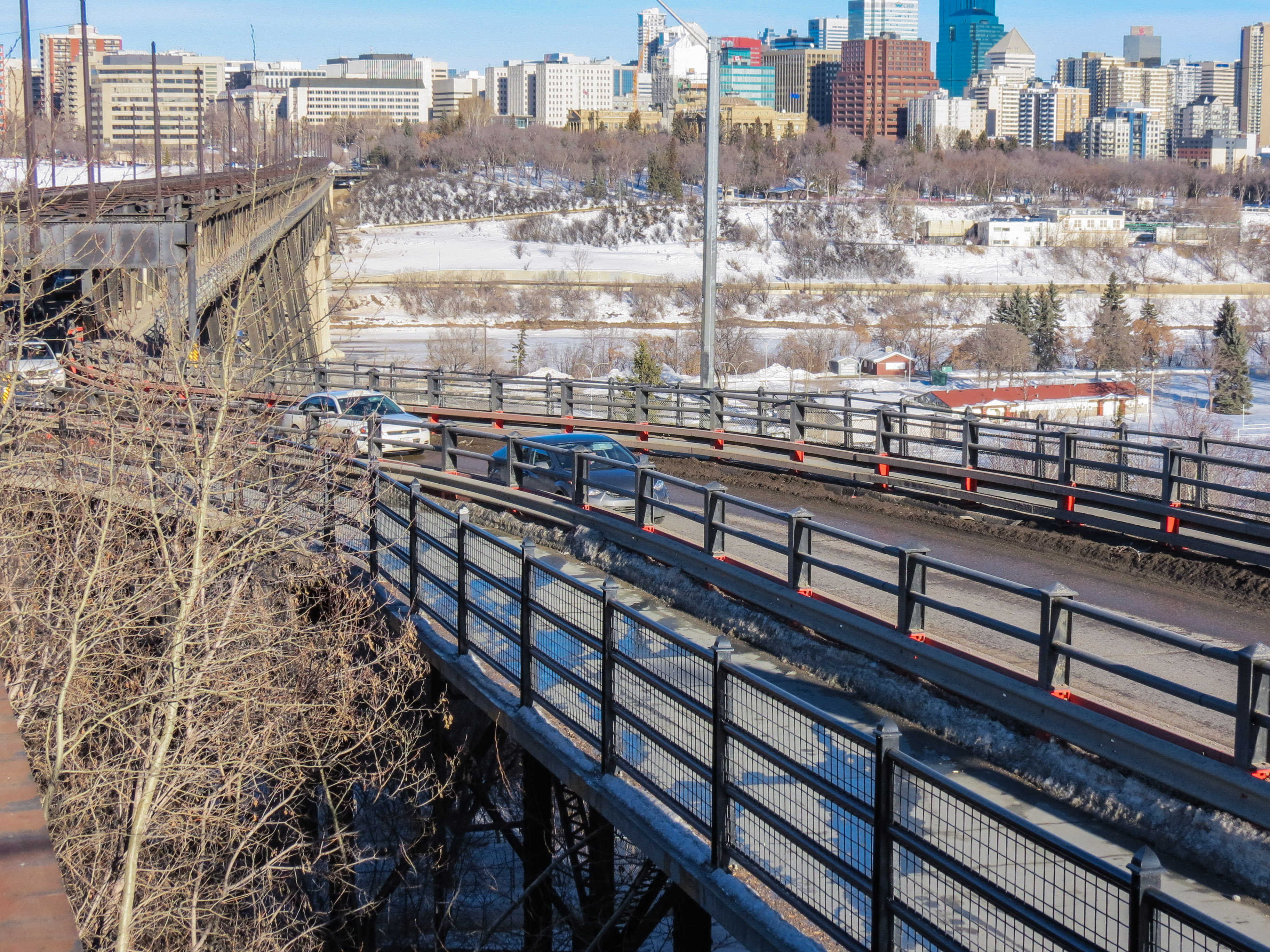
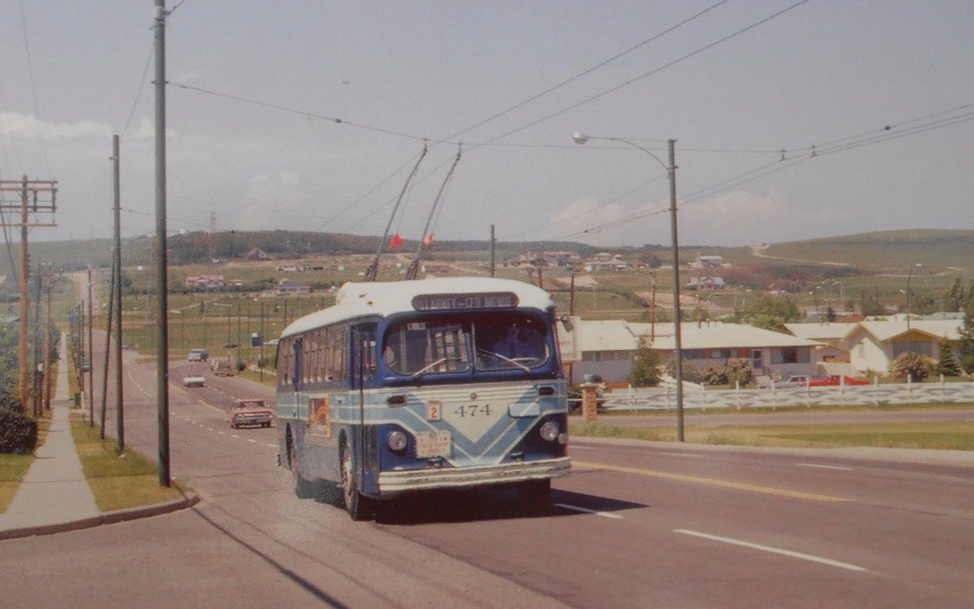
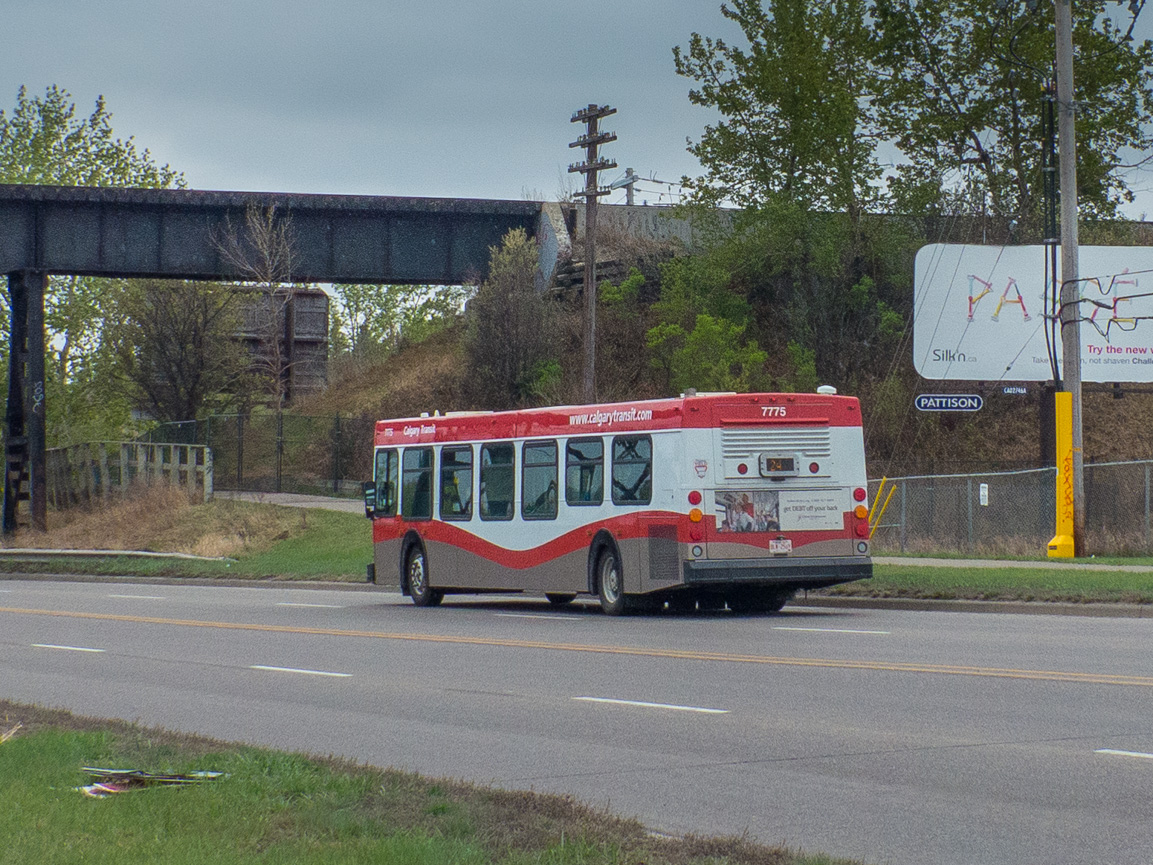
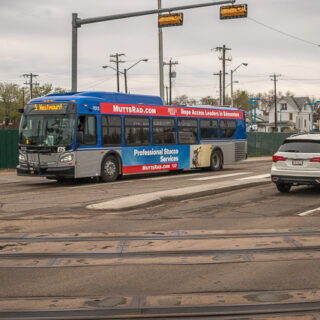
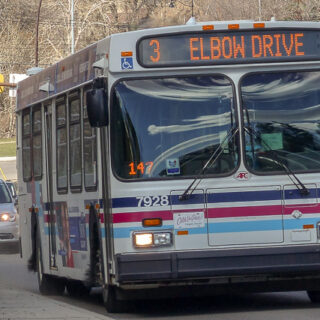
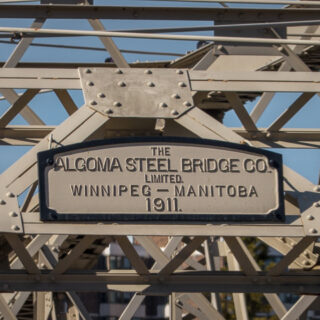
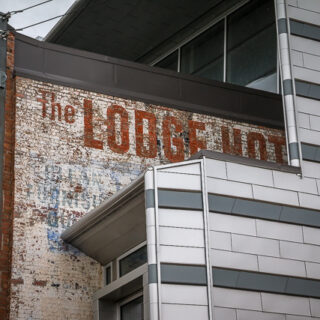
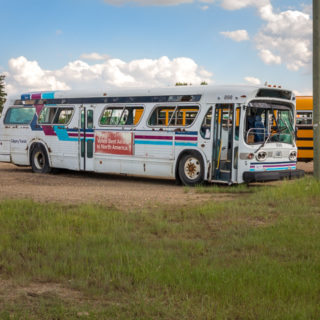
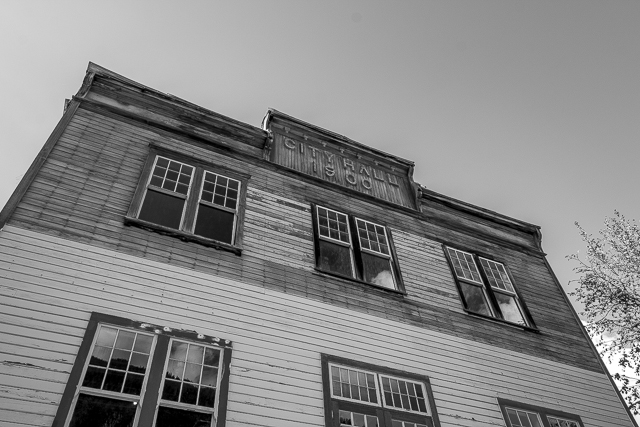
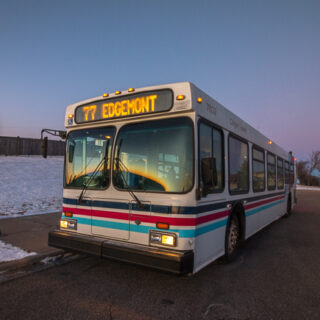
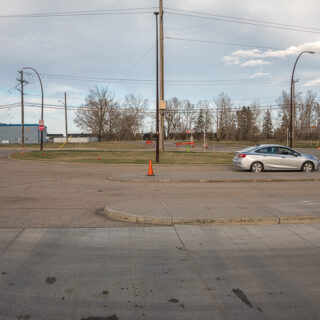
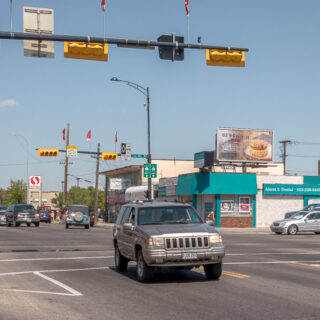
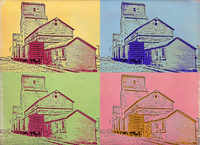






I believe Chris in the slides I provided you, there are a few of the CN tower actually being built.
Yes, I recall seeing those. Still have yet to go through the whole collection however, it’s sure interesting. So much to do, so little time.
My family, my Mom and Dad, two sisters, and me as a ten year old kid, arrived in Edmonton in 1969. And we took the train and passed through this very building. It is horrible that more people in this country do not take trains.
Very cool! You know, I’d take the train, if there any going where I was travelling. Is there so few trains because no one takes them, or no one takes them because these are few trains. A Calgary to Edmonton shuttle would be a great idea.